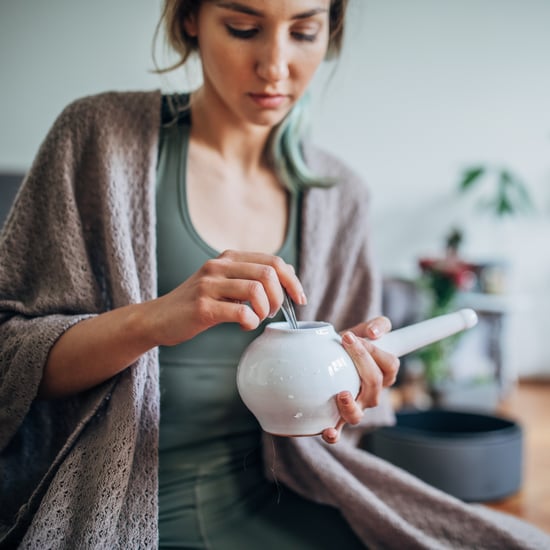Is It Safe to Sleep With a Tampon In?
What You Should Know About Sleeping With a Tampon in, According to a Gynaecologist

Whether you have a habit of dozing off before changing your tampon or just think the menstrual product is more comfortable and reliable to wear to bed, you may be wondering if sleeping in a tampon is safe.
According to Elisa Felsen-Singer, DO, an ob-gyn at New York University Langone Huntington Medical Group, it is safe to wear a tampon overnight — but only if you don't leave it in for more than eight hours.
Wearing tampons for long periods of time (during the day or overnight) is associated with toxic shock syndrome (TSS), a rare, but serious and life-threatening condition. Hence the general rule of thumb for not wearing a tampon for more than eight hours.
"Toxic shock syndrome emerged as a potential risk for tampon users in 1979–1980," Dr. Felsen-Singer said. "Very high absorbency tampons were put on the market and subsequently women were able to use them for longer periods of time. It resulted in a favourable environment for bacteria, usually staph aureus [one of the types of bacteria that commonly cause TSS]."
Even though those tampons are no longer available, whenever tampons are worn for many hours at a time, they can become the ideal environment for that dangerous bacteria to grow, which could potentially cause TSS.
"Newer tampons have safer materials that inhibit bacteria growth. The FDA also now requires manufacturers to use proper labelling for absorbency levels as well as guidelines to educate women on proper, safe use," Dr. Felsen-Singer explained.
Whatever you choose to wear to bed at night — tampon, liner, or pad — you'll want to stick to the eight-hour-max rule (the risk of TSS isn't limited to tampons).
Kelly Kasper, MD, a board-certified Ob-gyn with Indiana University Health, recommends inserting a new tampon right before bed to help ensure you don't exceed the recommended time limit, as well as taking it out as soon as you wake up in the morning.
"Make sure to use good hygiene when placing a tampon. The bacteria known to cause TSS lives on some people's hands naturally," Dr. Kasper added.
Whether you're awake or asleep, you should also choose a tampon that matches your menstrual flow needs. For example, Dr. Kasper said if you do not have a heavy flow, you should not wear a super absorbency tampon. The FDA notes wearing the lowest absorbency tampon needed for your flow can further help prevent the risk of TSS.







